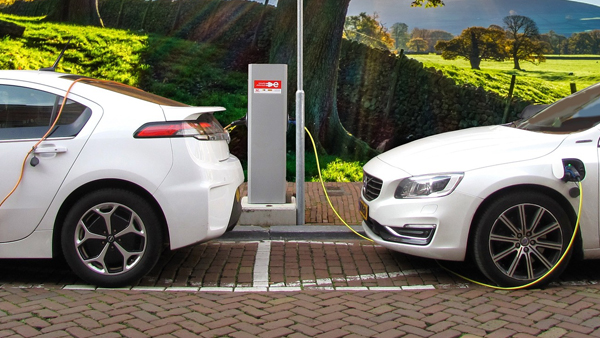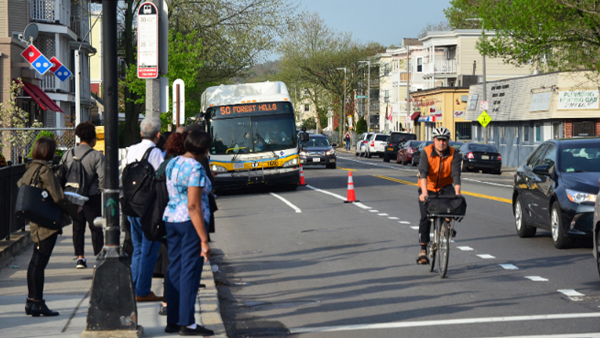
Reducing EV Charging Infrastructure “Soft” Costs
Rocky Mountain Institute, Dec. 2019
The report analyzed the costs of Electric Vehicle (EV) charging technologies and found that, while hardware costs are gradually decreasing, there are significant “soft costs” that sometimes drastically raise the cost of installing chargers. The researchers define “soft” costs as undocumented and variable costs in the installation process. They include the costs of permitting delays, utility interconnection requests, compliance with a regulations, negotiating with property owners, the reengineering of projects due to faulty information and others.
The report was based on interviews with a variety of organizations, including utilities, hardware providers, software providers, operators of charging networks. Soft costs were frequently cited as a more significant expense than charging station hardware in the United States—three to five times the cost of the charger, a much higher ratio than that in Europe
“What we discovered is that the cost of EV chargers is following a progression that is very similar to that seen in the solar sector over the past decade: The cost of hardware components that are (or could be) manufactured at scale is already declining along a typical ‘experience curve’ for a new technology, as manufacturers gradually find ways to squeeze cost out of their processes. Software systems are a relatively small part of total infrastructure cost and do not present a significant cost reduction opportunity,” according to the report.
As a result, the study focuses on the identification and potential reduction of “soft” costs. Recommendations include procurement in larger volumes, consolidation of charging sites, expedited permitting and installation during construction.
The authors suggest that further research be done in identifying “soft” cost opportunities as the subject itself is relatively undefined and therefore, largely ignored. Examining how solar power has improved its cost efficiency can pave a way for EV charging and its goal to advance congruently with automated vehicle technology.
The full report, “Reducing EV Charging Infrastructure Costs” can be found at rmi.org/insight/reducing-ev-charging-infrastructure-costs/ Researchers: Chris Nelder, Emily Rogers
Guidebook Helps Municipalities Prepare for Alternative Fuel Vehicles
NJTPA, Feb. 2018
The NJTPA has developed a guidebook to help municipalities prepare for and encourage increased use of alternative fuel vehicles, particularly electric vehicles. To develop the guidebook, the NJTPA worked with three pilot communities—Montclair Township in Essex County, the Town of Secaucus in Hudson County and Woodbridge Township in Middlesex County—to develop local readiness plans. These plans help develop an understanding of the alternative fuel vehicle market in each community; identify stakeholders; identify barriers to increased alternative fuel vehicle usage; and develop action plans to help support alternative fuel vehicle market growth.
The guidebook highlights best practices, offers insights into the different types of alternative fuels and includes recommendations for advancing alternative fuel vehicle usage. Among the issues municipalities face, are the need to accommodate electric charging stations on public streets and encourage their installation in new private development, including parking garages in apartment buildings. The guidebook contains information on zoning and parking regulations; permitting and inspection; stakeholder engagement; and targeted education and outreach.
The guidebook is available at www.njtpa.org/NJTPA/media/Documents/Planning/Regional-Programs/Alternative-Fuel-Vehicles/NJTPA-AFV-Infrastructure-Study-Final-Report.pdf

Boston’s “cone pilot” on Washington Avenue. LivableStreets
Best Practices In Implementing Tactical Transit Lanes
UCLA Institute of Transportation Studies, Feb. 2019
The report is intended for planners interested in trying quick, low-cost, and reversible transit lanes. A Tactical Transit Lane (‘TTL’) is a bus-only lane tactically implemented in dense, congested areas to speed up transit without major capital improvements. “Many projects described by other names, such as dedicated bus lanes, transit corridors, bus priority lanes, and business and transit access (BAT) lanes, are TTLs,” according to researchers.
TTLs can increase reliability of service in times of heavy commuter traffic. The have been found to reduce potential peak congestion travel times in some cases by 20 percent. Everette Oregon used traffic cones to designate tits temporary bus lane; Cambridge, Massachusetts used a red-painted lane.
“TTLs are often installed by a city department while the buses that use them are operated by a separate city or county agency. A collaborative relationship is essential for a project’s success, particularly if it is politically risky,” said the authors.
Due to their relatively low costs, private foundations have supported many TTLs and are potential funding sources. The guide recognizes potential barriers to TTL including, access to parking, loading and docking zones, as well as proper enforcement. Without enforcement, TTLs break down. Enforcement of TLLs sustain the lane’s reliability as its very easy to disrupt TTLs and make congestion even worse. “When lanes are not kept clear for transit, buses must maneuver around parked vehicles and where violations occur regularly, bus drivers may start avoiding using the TTL altogether to avoid such maneuvers, which defeats the purpose of the lane.”
Outreach is one of the last and most important steps with TTL, to avoid the public perception that they will disrupt streets, limiting access. Once implemented the report says many commuters laud the programs, citing saving up to 10 minutes on their commute. Case studies from Minneapolis and Boston show that the lanes can generate significant commuter demand.
The full report can be found at www.its.ucla.edu/wp-content/uploads/sites/6/2019/02/Best-Practices-in-Implementing-Tactical-Transit-Lanes-1.pdf Researchers: John Gahbauer, and Juan Matute, UCLA Institute of Transportation Studies
How Locals Need to Prepare for the Future of V2V/V2I Connected Vehicles University of Minnesota, August, 2019
The report provides guidance on how to prepare for and accommodate Connected and Automated Vehicle (CAV) technology. It discusses potential technologies and applications as well as offering recommendations to local governments and stakeholders. The report provides background on the difference between Connected Vehicles (CVs) and Automated Vehicles (AVs).
“At the highest level, CV technology simply means that vehicles have the ability to communicate wirelessly with other vehicles and with infrastructure, exchanging much more detailed information than is capable with current technology. This communication is facilitated through the addition of a radio system with a certain operating frequency and communication protocol,” according to the report. The technology used for communication forms a platform on which wide range of applications can be built, ranging from providing faster warning signs for drivers, enhanced cooperation between vehicles, an improved transportation network, and access to more accurate data.
Meanwhile, “Autonomous Vehicles (AVs) are vehicles that have the capability to automate some or all of the driving task, taking control of the vehicle away from the driver. AVs do not imply any connectivity; instead, all information is obtained through sensors mounted on the vehicle.” Though AVs have received the majority of press and attention, CV technologies will likely appear first as the market gradually progresses to a more automated and technological-dependent road network. Equipment purchased for CVs—such as dedicated short-range communication (DSRC) and road-side Units (RSUs) that are used to communicate with vehicles—should comply with the latest standards in order to ensure that it will be compatible with future equipment.
The study finds that even though it is impossible to predict the true costs or benefits that will come from CAVs, local road operators can generally prepare for their deployment. Clearly visible and reflective road markings can help road sensor and lane discernment technology that is integral to automated vehicles and applications such as “lane-assist.” Paint wear and inclement weather can reduce the effectiveness of these technologies and must be factored in when discussing road maintenance. The study all calls for maintaining clear road signs, modernizing roadway design information including in GIS maps, upgrading timing signal controllers, developing communications infrastructure such as fiber optic networks and following guidance from USDOT and state transportation agencies.
For CAV and CV to be fully realized, developers and stakeholders must work closely with local government, enacting legislation to stimulate CAV testing, investing in CAV technology, or granting CAVs priority access to dedicated lanes. Transportation-based agencies and policy makers must be collaborative in addressing the best ways to implement automation moving forward.
The full report can be found at www.cts.umn.edu/Publications/ResearchReports/reportdetail.html?id=2862 Researchers: Gordon Parikh, Melissa Duhn, John Hourdos